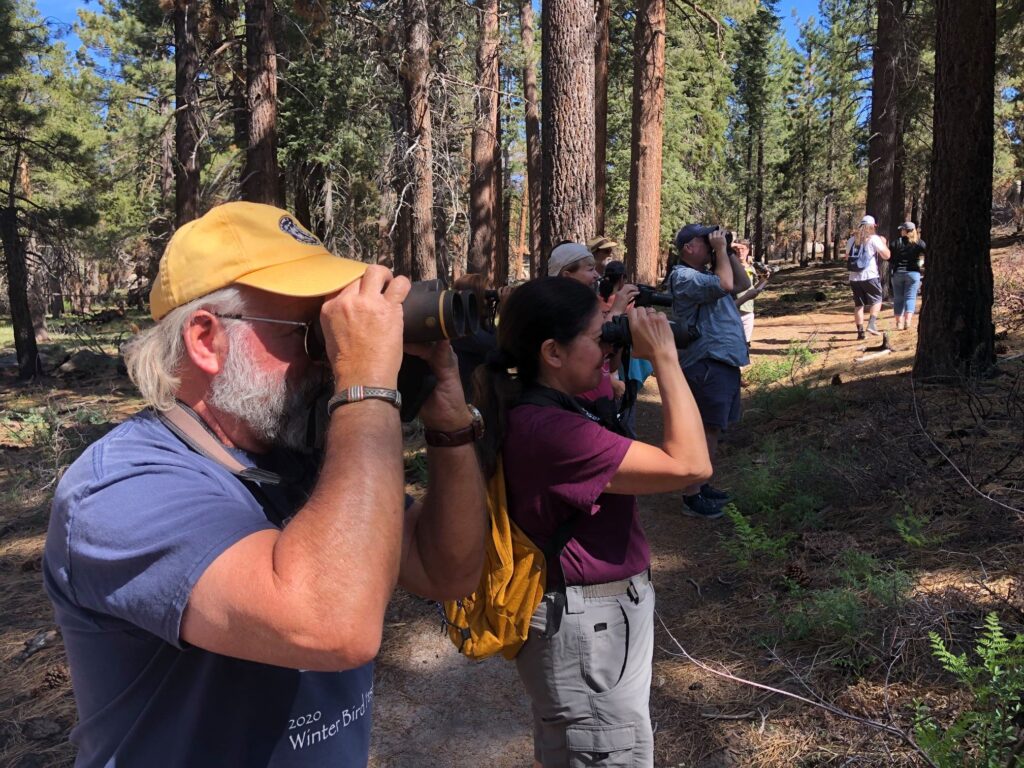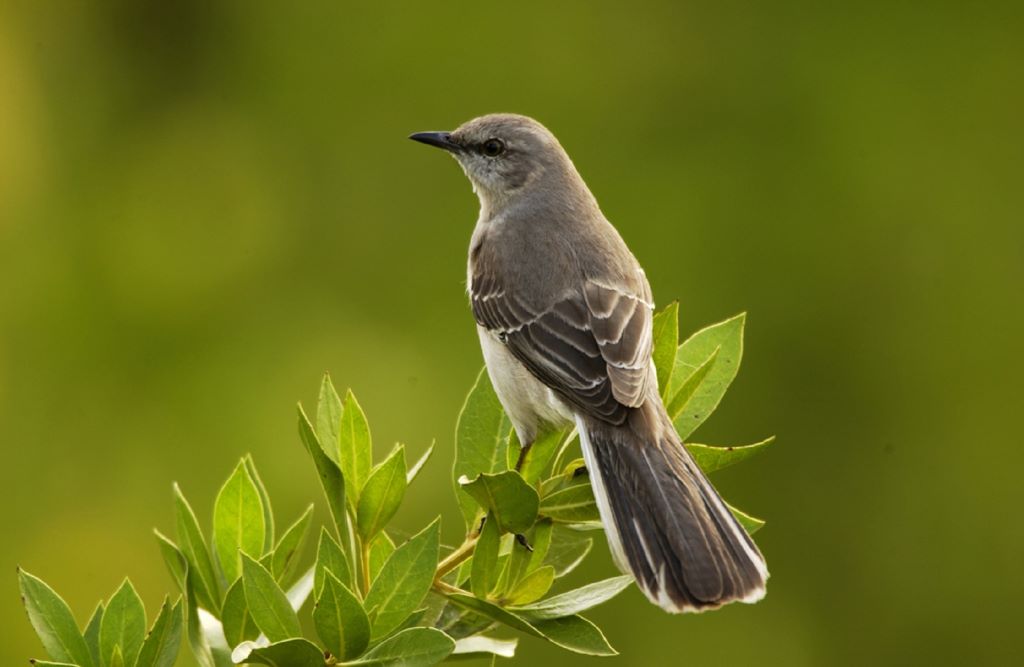Is that the doorbell, a cell phone ringtone, your husband calling you from the next room—or is it one of these master bird mimics? These birds have the ability to copy everything from a car alarm to human speech. Here’s a bit about these vocal copycats, including how to attract them to your own backyard for some up-close-and-personal entertainment!
American Crow
You might associate your local crows with a territorial caw when you walk by, but these amazing corvids have a wide range of vocalizations. Not only do they also coo, rattle, and click (each conveying a different meaning), but they can also mimic human voices and other sounds. Considered one of the most intelligent bird species, American Crows have even been known to show interest in different languages. Some bird experts posit that the crow’s ability to mimic human voices is rivaled only by the parrot, and that crows might even be more vocal if they were kept as pets as often.
Check out this distinctive crow talent in action:
Northern Mockingbird
It’s all in the name—Northern Mockingbirds “mock” the calls of other birds, as well as other animals and even inanimate objects. These musical virtuosos can sound like a cardinal, jay, titmice, or wren. They can also recreate the startling sound of a car alarm, the croak of a frog, and even the distinct bark of your family dog. In fact, an adult male mockingbird can mimic up to 200 different sounds in their lifetime. Experts theorize that the males of the species will often “show off” their vocal range as a way of establishing their age and experience (and ability to care for young) during courtship.
Listen to this Northern Mockingbird mimic over 25 bird species:
Sage Thrasher
A small bird with a big voice, the Sage Thrasher is closely related to the mockingbird family. As such, they display similar vocal talents, including the ability to mimic other birds like meadowlarks, sparrows, gulls, nighthawks, and quail. And they’re tireless with song—the longest documented Sage Thrasher ballad is a whopping 22 minutes! Want to attend a Thrasher concert in your own backyard? Put out a fruit feeder full of berries, grapes, and other fresh fare. You can also coax them with insects using these tips on how to attract bug-eating birds to your yard.
Enjoy the melodious sounds of the Sage Thrasher:
Yellow-Breasted Chat
The Yellow-Breasted Chat is an energetic, if elusive, songbird. Called the “clown among birds” by famed ornithologist Arthur Cleveland Bent, the Yellow-Breasted Chat has an astonishing repertoire of sounds, from catcalls and whistles to copying songs from other bird species. They often mix these vocalizations to cause confusion when birds and predators try to find them. Part of the warbler family, Yellow-Breasted Chats can be found locally in the Big Bear area, and love to feed on berries and grapes, as well as different types of insects. Preferring to keep under cover as they feed, you’ll be hard-pressed to find them at your feeders, though you may be able to coax one out of the brush by mimicking its song.
Turn on sound to hear the Yellow-Breasted Chat’s impressive vocal range:
Blue Jays
These intelligent birds are known for various vocalizations, but they get the most attention from mimicking hawks. This impersonation has its benefits: Blue Jays can not only ward off other would-be predators with this cry, but they can warn other birds in the vicinity when hawks are nearby. And young, male Blue Jays have been known to imitate the hawk cry during mating season to get the attention of available females.
Jays of all kinds—including our local Scrub-Jays in Big Bear—have also been known to copy the sounds of eagles, owls, and other birds of prey. If you want to attract more of these talented birds to your backyard bird feeders, put out some of their favorite fare, including suet and bird seed mixes packed with sunflower seeds.
Is that a hawk I hear? No, it’s a Blue Jay in action:
Gray Catbird
Named for their cat-like “meow” call, Gray Catbirds are natural mimickers. In fact, aside from cats, they can also copy a variety of other noises, from a blackbird, crow, or robin’s distinct vocalization, all the way to a dog’s bark. Master impressionists, Gray Catbirds can even mimic a sound and sing a song—all at once! Multitalented, versatile singers, these gray birds can often be found in thickets and dense shrubbery in the southern US. In fact, many a hiker has been fooled into thinking a housecat was on the prowl nearby, only to find a gray catbird meowing in a nearby shrub.
These vocalizations of the Gray Catbird are the cat’s meow. Literally:
Miss a Bird Walk or Bird Talk? Stream it Now!

Along with our live birdwatching walks and expert bird talks, we also offer virtual versions—free of charge! Go to Chirp’s YouTube page to stream a previous Bird Walk or Bird Talk, or join us via livestream on our Facebook page. Of course, we’d love to see you in person too—check our Activities calendar for our next live event!


